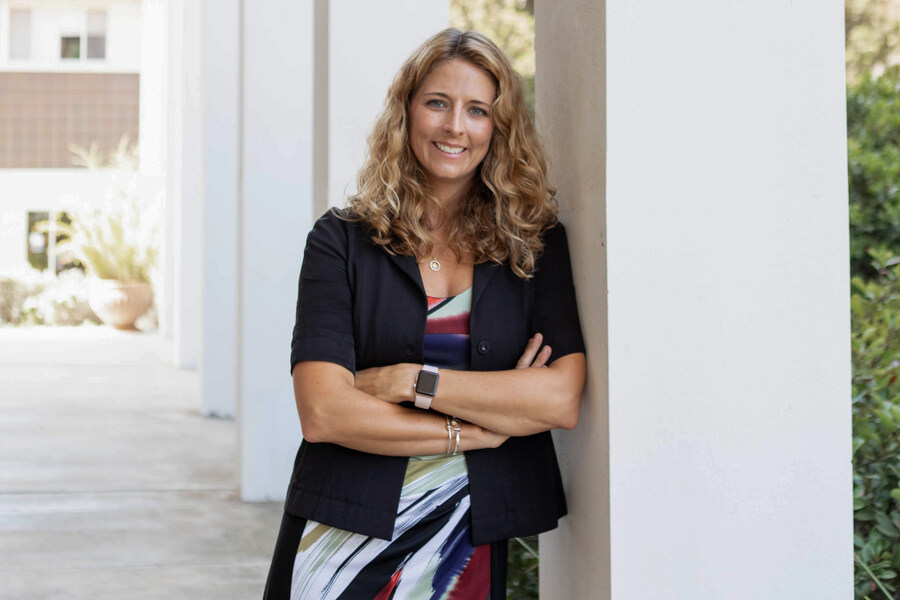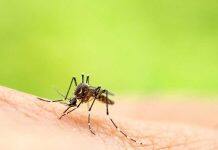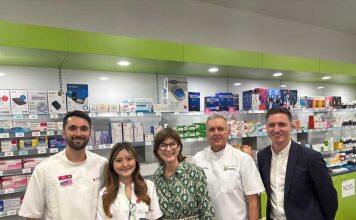Suzanne Blake of MIT Emergency Management analyzes the results from the program, which administered more than 250,000 tests last semester.


During the fall semester, more than 12,000 members of the MIT community were authorized to access campus. Depending on how much time they spent on campus, these community members underwent required Covid testing up to twice a week. That testing will continue through the spring semester, as most first-year students, sophomores, and juniors will return to campus. This semester, MIT Medical has also launched an updated, more informative dashboard to track the testing results. Suzanne Blake, director of MIT Emergency Management, talked to MIT News about the results from last semester’s testing program and plans for the spring semester.
Q: Can you provide an overview of the numbers from last semester’s testing program? What is the breakdown among different groups on campus?
A: During the period from Aug. 20 to Dec. 31, there were 402 known cases of Covid-19 in the MIT community. This includes cases at all MIT campus testing sites, cases among MIT Medical patients, and cases among people who were not accessing campus, but who were part of our testing program.
Although 402 cases might sound like a lot, MIT Medical administered a total of 257,670 Covid tests during this time. This means that about 1 in every 640 Covid tests resulted in a positive diagnosis, for a positive rate of about 0.16 percent. Those 257,670 tests were administered to over 16,000 members of the MIT community, meaning that 3.7 percent of individuals tested by MIT since August have tested positive.
MIT offered significant support to members of our community who had the stressful experience of testing positive, and fortunately, very few of our positive cases were serious enough to require hospitalization. Many cases involved individuals who were off-campus much of the time.
Our rigorous surveillance testing program was instrumental in limiting the spread of Covid among the members of our community. Our approach detected many cases that were not yet symptomatic; only about one-third of individuals were showing symptoms when MIT Medical notified them of a positive test. This means that we were able to detect positive cases early and ensure that those individuals went into isolation early, protecting others on our campus.
Of those testing positive during the fall semester, about 45 percent were staff, 32 percent were students, and the remaining 23 percent were in other categories — contractors, affiliates, faculty, or MIT Medical patients. Of the students who tested positive, the vast majority were graduate students; only about 4 percent of MIT’s positive cases in the fall involved undergraduates.
The 402 individuals who tested positive had 392 close MIT contacts — others at MIT who needed to quarantine because they spent more than 15 minutes within 6 feet of a person who later tested positive. Among the cases we looked at last semester, there were only seven instances of possible on-campus transmission. Otherwise, the positive individuals appear to have contracted the virus away from MIT.
These relatively low numbers of close contacts, and the low rates of on-campus transmission, speak to our community’s success in masking and maintaining social distancing, even among those who were living or working on campus in the fall. Members of our community, through their actions, helped to keep their friends and colleagues safe from Covid-19. That’s something for which we can all be very grateful.
Q: What additional information has been added to MIT’s Covid-19 dashboard?
A: Since August, we’ve been posting on our Covid-19 dashboard the numbers of tests administered each day and the numbers of positive tests that have resulted.
Last month, we began adding new information — breaking down cases among students, employees, and affiliates for the previous day, the previous week, and since August. We feel that this will help our community better understand where the impacts of our positive cases are being felt at any particular moment in time.
We’ve also begun providing weekly updates on the dashboard indicating how many of the previous week’s positive diagnoses involved people living off campus; how many close contacts were associated with those positive cases; and whether on-campus transmission is suspected in any of those positive cases.
Finally, we’re now comparing MIT’s percentage of positive tests each week with similar numbers for the City of Cambridge and the Commonwealth of Massachusetts. For example, as of Feb. 5, 0.22 percent of MIT’s Covid tests in the previous seven days resulted in a positive diagnosis, compared with a 14-day average of 1.06 percent in Cambridge and a seven-day average of 3.29 percent in Massachusetts.
We think that providing more information on the dashboard will help explain the story behind the positives, offering context that is much more telling than just sharing the number of positive cases. It’s really important to understand the patterns of the positive cases, and how MIT’s Covid-19 situation relates to the community beyond our campus, in order to understand our risk.
All of the data we collected last semester about positive cases has told us that the risk of contracting Covid on the MIT campus is very low. Because of the policies and programs we’ve put into place and the diligent actions of our community, we’ve been able to ensure that MIT is a safe place to be during this pandemic.
Q: How prepared is MIT to respond to the Covid-19 situation as we move into the spring semester?
A: Last summer we developed and implemented a process to analyze positive cases and any other Covid-related issues at MIT. We think that this approach worked very well during the fall semester, and we plan to continue it into the spring semester.
The process consists of daily meetings of the campus-wide Covid Monitoring Team (CMT) and, when needed, the Covid Decision Team, a group of senior Institute leaders. The CMT meetings allow us to work with critical stakeholders across campus to understand our situation in real-time, using key internal and external data points. The process allows us to remain nimble, flexible, and adaptable as conditions change, and establishes the relationships we need to quickly respond to any issues caused by the pandemic and communicate any necessary changes in MIT’s policies or operations.
We also form smaller teams as critical topics arise, such as the Vaccine Planning Team, the Testing Team, and the Campus Space Contingency Working Group. This way, we can ensure the success of Covid-related processes at MIT and provide the best and safest procedures for the MIT community as we operate through the pandemic.
There are so many people across MIT who have dedicated countless hours to keeping the MIT community safe during this pandemic, and keeping these regular processes going has been key to our success in mitigating the impacts of Covid-19 at MIT.
Finally, I’ll say that the arrival of Covid vaccines means that all of the hard work we’ve put into managing the pandemic at MIT and keeping the MIT community safe has been worth it because we are finally turning a corner in this pandemic — assuming we can keep our guards up and continue following public health guidelines, so the spring semester can be successful. The vaccine gives us hope for a better MIT and a better world: fewer illnesses and deaths, an improved economy, and a time when we can hug our family members and friends again. It’s a huge step forward toward eradicating Covid-19.








































